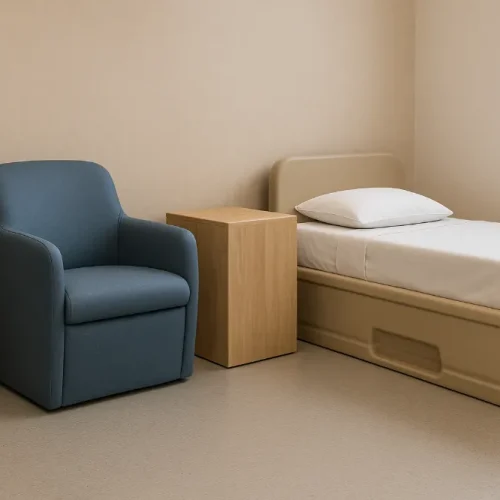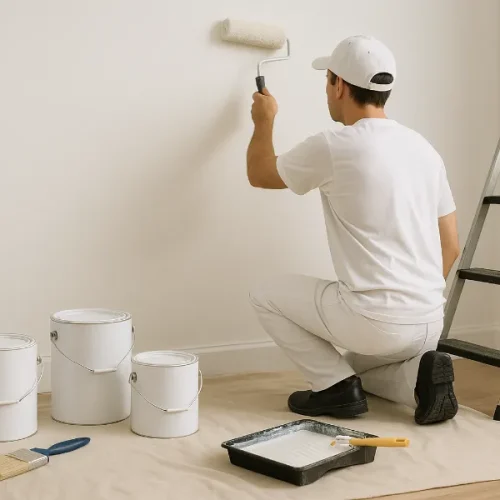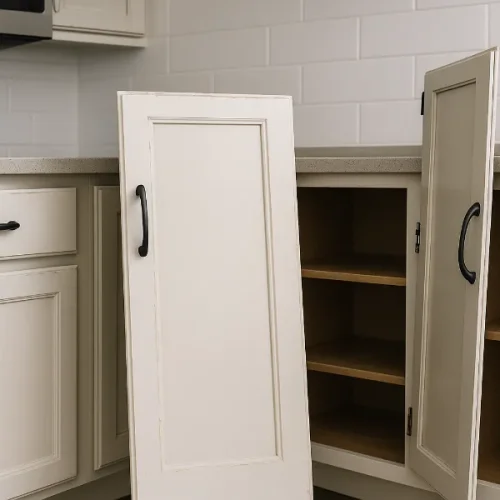
Transforming a bare dirt patch into a thick, green lawn is a goal for many homeowners in Orlando. The Florida climate brings unique challenges and opportunities for anyone hoping to establish healthy turf. With hot summers, mild winters, and variable rainfall, picking the right season is key when planning a successful lawn project.
Each season in Central Florida has its own benefits for sod installation. Spring offers favorable conditions for root establishment, as soil temperatures become suitable for new grass to take hold. Fall brings relief from intense heat, letting new turf settle before winter. Even summer and winter can work, but knowing the best windows for each season can lead to more dependable results and fewer setbacks. Spring is often seen as a good time for new sod installation because soil temperatures typically become warm enough for root development. Timing lawn care throughout the year creates a base for strong turf and lasting garden health. Installing brand new grass or repairing rough spots with awareness of seasonal patterns helps achieve that picture-perfect yard many Florida homeowners desire.
The Foundation of a Beautiful Lawn
Soil preparation comes first when planning a lawn transformation. Florida soils are often sandy, so testing soil at home or with professional assistance gives clear results. A good soil analysis avoids guesswork, reduces wasteful fertilizer use, and helps target real nutrient gaps. Sod Orlando FL may provide guidance on soil preparation specific to local conditions. Once soil is tested, clear the area of rocks, sticks, and existing weeds. Applying a weedkiller to stubborn growth and waiting the suggested period avoids future weed problems and protects new grass. Lawn service providers around Orange County have shared that thorough weed removal means fewer outbreaks later.
Gradually grading the ground away from the home keeps water from pooling. Addressing low spots prevents standing water, which can rot grass roots. Central Florida contractors have noticed that lawns with correct grading maintain even turf and stay healthy after heavy rain. Adding compost or quality topsoil improves soil condition and water retention in sandy ground. Local specialists recommend matching amendments to Orlando’s soils for the best start possible. Taking steps to improve soil quality can help produce thicker turf and reduce the need for excess irrigation. Installing an irrigation system before laying sod means new grass receives consistent water exactly where needed. On recent Orlando projects, properties with timed irrigation established grass evenly, while lawns left to manual watering showed patchiness and dry areas.
Spring Lawn Transformation Techniques
Spring in Orlando gives new lawns a strong advantage. As soil temperatures rise to the right range, roots can develop quickly. For most of Central Florida, these conditions usually occur from March through May, making this a popular window for sod installation. Before installing grass, raking the soil smooth and applying a starter fertilizer sets up the turf for strong growth. A fertilizer rich in phosphorus encourages more robust root systems during these important weeks.
Choosing between seed and sod depends on needs and budget. Sod provides instant coverage and a finished look, but can cost more up front. Many homeowners choose sod in spring to establish coverage quickly before summer heat arrives. Consistent moisture is necessary for a successful start. After installation, keep the soil damp with frequent, light watering. As roots extend, space out watering and make it deeper to build drought resistance and deep-rooted turf.
Seed vs. Turf Decision Making
Several factors shape the choice between seed and turf. Most people focus first on cost, and this varies with grass type, area size, and soil requirements. Consulting with trusted Orlando turf suppliers ensures pricing reflects the right grass varieties and project scope.
The time needed for transformation also plays a big role. Turf makes a lawn usable right away and looks finished immediately. Growing from seed takes patience. Grass must germinate and fill in, sometimes over months. For anyone wanting a quick turnaround, turf delivers results faster. The level of effort required varies between methods. Sowing seed involves prepping soil, spreading evenly, and maintaining steady moisture while the grass gets established. Laying turf requires more physical effort at first, and prompt installation is necessary so roots attach properly.
Maintenance after installation sets the two apart further. Seeded lawns often see more weed problems early, since bare soil allows weeds to spring up while grass thickens. New turf typically forms a thick mat with fewer weed issues, making ongoing care simpler during the first few months.
Summer Lawn Care Challenges
Orlando summers bring heat and humidity that stress young lawns. While not ideal for installation, sometimes summer projects cannot wait. Achieving good results demands careful attention throughout the establishment process. Watering becomes a central focus. Lawns must stay moist but never soggy. The best time to irrigate is early morning, before the sun is up, to limit evaporation and disease risk. Providing about an inch of water per week, including rainfall, is commonly recommended for healthy lawns.
Heat stress often appears as wilted or faded patches. To protect the grass, raise the mowing height and leave clippings on the surface for natural shade. For St. Augustine grass, mowing at a higher setting during summer helps the lawn cope with the hottest weeks. Summer weeds grow fast and compete with grass for space and nutrients. Hand-pulling offers a safe way to manage young turf, since many herbicides are risky in the heat and can harm new roots. Wait for the lawn to be mowed several times before using any weed control products.
Fall Renovation Strategies
Fall delivers milder weather and is a smart choice for lawn renovation in Orlando. From September through November, the grass can settle in and build roots before cooler winter temperatures. Cool-season grass varieties prefer fall planting, though most Central Florida lawns feature warm-season grasses like St. Augustine or Bahia. These varieties are well suited to the region’s climate and are commonly chosen for their resilience and appearance.
For patchy lawns, overseeding in autumn works well. Lightly rake bare spots, scatter seed, and cover with a thin compost layer. Maintaining steady moisture until seeds sprout gives the best chance at thick, new growth. Fall is also a great time to improve soil health. Core aeration loosens compacted soil and helps more water and nutrients reach the roots. Following aeration, topdressing with compost further improves structure and supports new grass.
Seasonal Maintenance Calendar
For Central Florida-specific lawn guidance, homeowners can find a variety of regionally focused resources that offer advice on timing fertilizer, mowing, irrigation, and pest management. A year-round plan for lawn care helps keep grass healthy through all seasons. January and February are good months for preventing weeds with pre-emergent herbicides. These months are also good for soil testing and planning spring renovations. Spring marks the period of growth for Central Florida lawns. Applying fertilizer according to soil test results supports healthy turf, with a typical 16-4-8 product working well for established grass where tests confirm the need. Regular mowing is important, and sharp mower blades keep the lawn healthier.
During April through August, watch closely for pests like chinch bugs in St. Augustine lawns and act quickly to avoid patches of damage. Deep watering less often works better than frequent, shallow watering and helps roots grow deeper in the soil. During autumn, aerate and consider overseeding thin areas. Applying fertilizer designed for the fall strengthens roots for winter, and less irrigation is needed as days cool and rainfall increases. These steps prepare the lawn for the coming dormant period.
November and December bring slower growth. Mowing less often and at slightly higher settings protects the turf. Continue to check for winter weeds and treat as needed. These quiet months are ideal for cleaning and sharpening equipment. Following this seasonal plan helps a refreshed lawn continue to thrive year after year, turning that former dirt patch into the envy of the neighborhood.
FAQs
Spring and fall are the best seasons because of moderate temperatures and consistent rainfall that help roots establish.
Yes, but it requires extra watering and attention due to intense heat and humidity that can stress young lawns.
Remove debris, level the ground, test the soil, and add compost or topsoil to improve water retention and nutrient content.
Sod provides instant results but costs more, while seeding is more affordable but takes longer to establish full coverage.
St. Augustine, Bahia, and Bermuda grasses are ideal for Central Florida’s heat and sandy soils.
Water lightly and frequently for the first two weeks, then reduce frequency as roots deepen to promote drought resistance.
Applying a phosphorus-rich starter fertilizer supports root growth, but always follow soil test recommendations.
Clear all weeds before installation and avoid herbicides until the lawn has been mowed at least three times.
Aerate, overseed thin areas, and apply a fall fertilizer to strengthen roots before the cooler season.
Wait until the grass is firmly rooted usually about two to three weeks before mowing for the first time.













